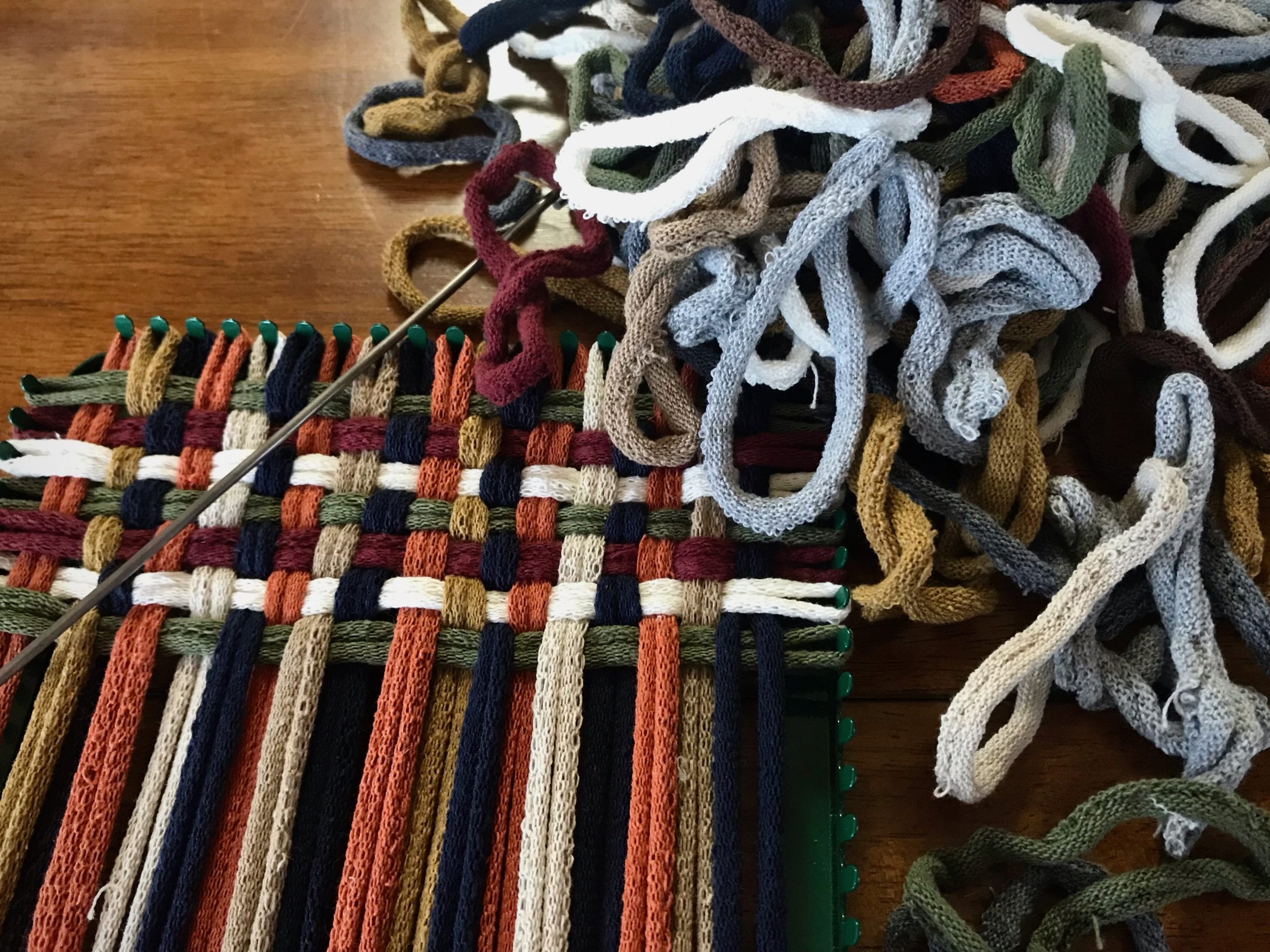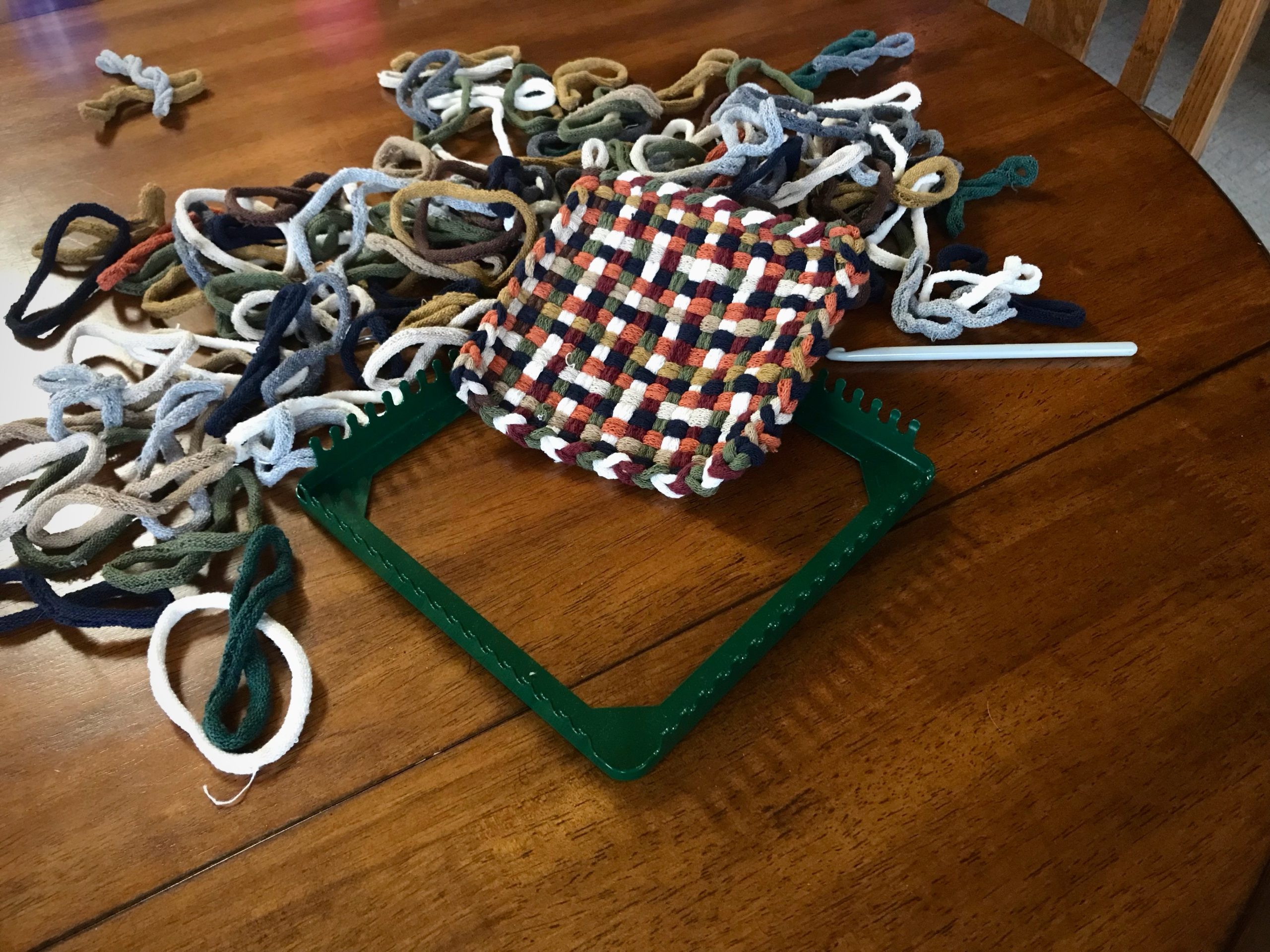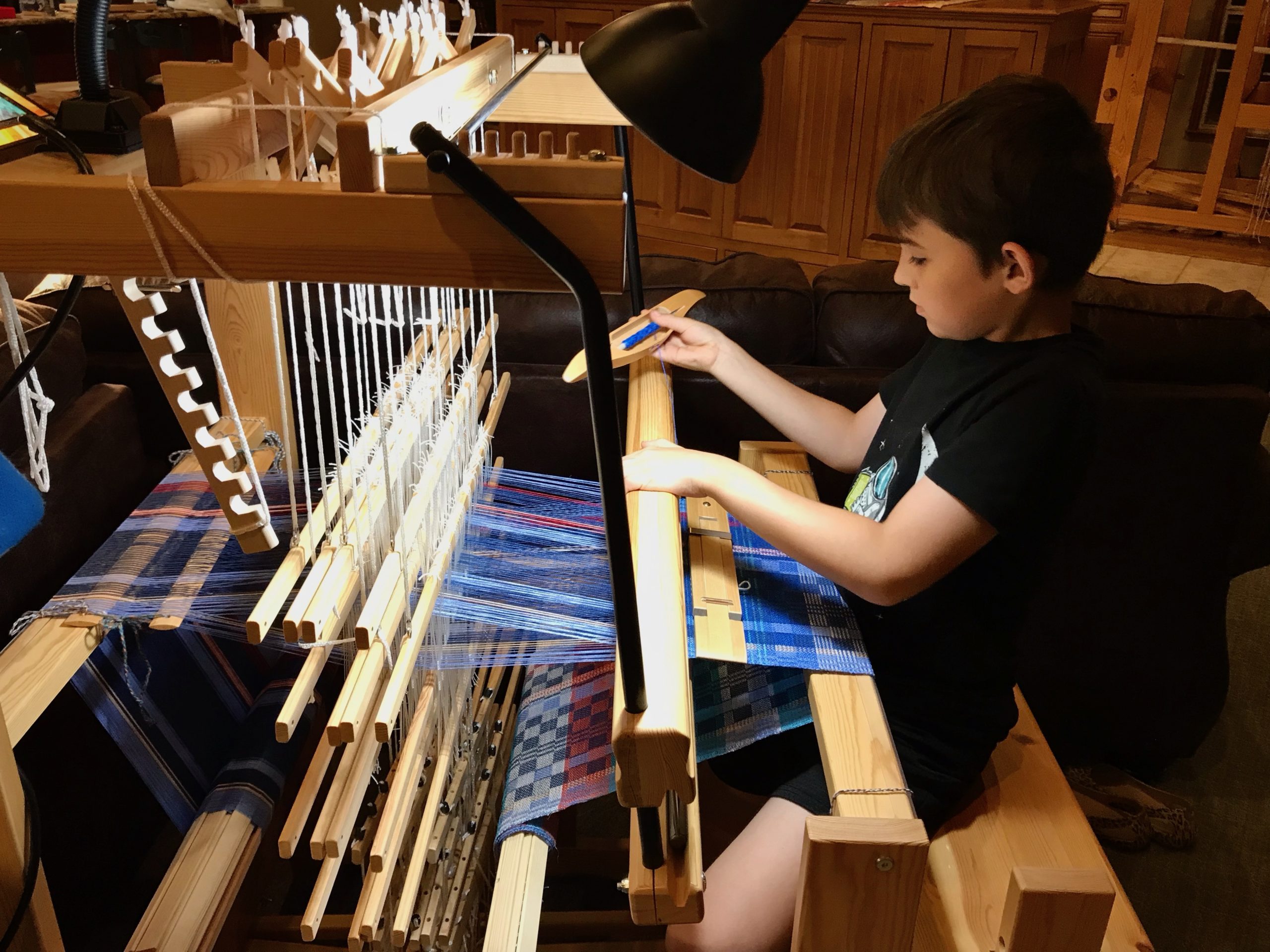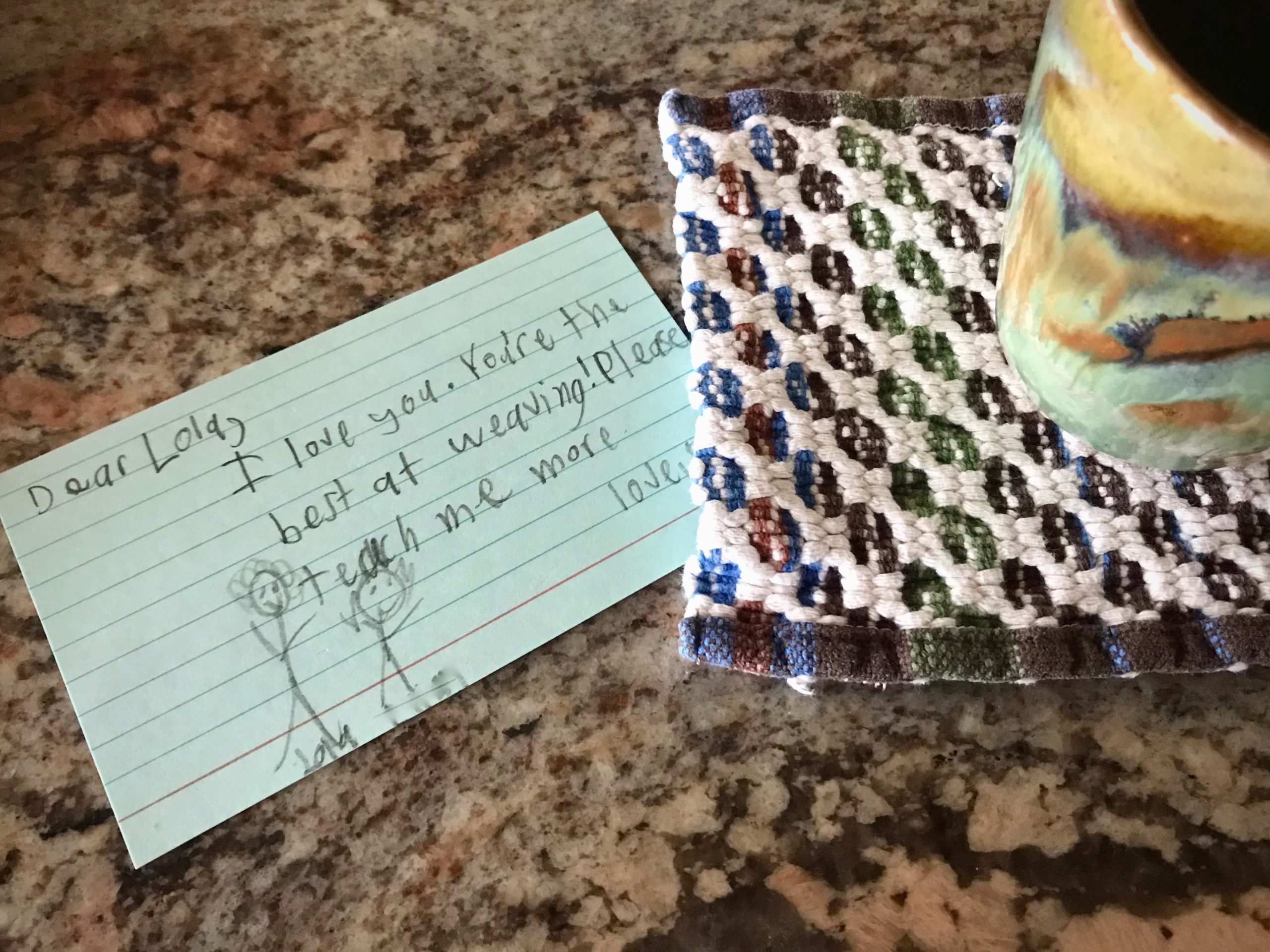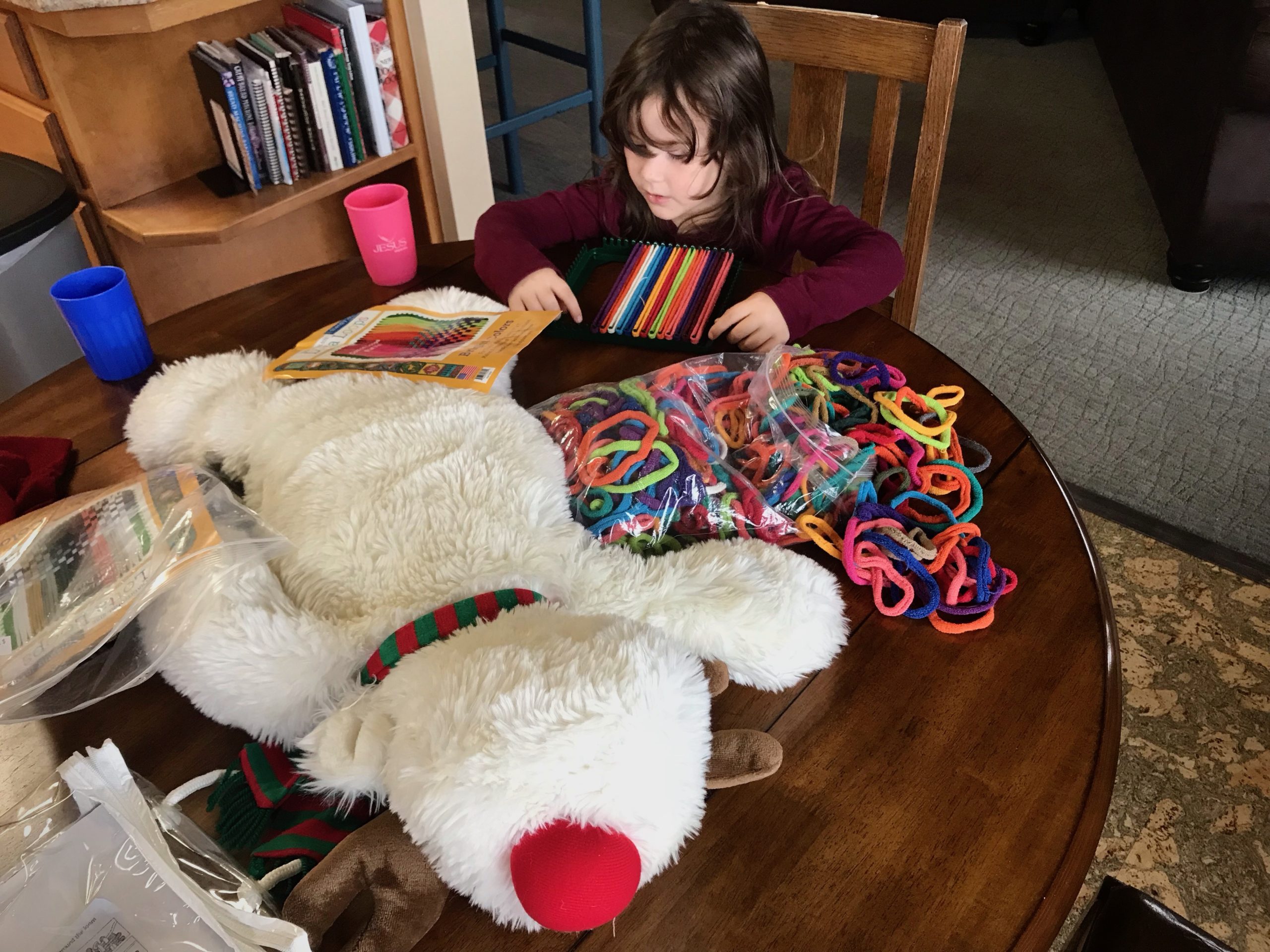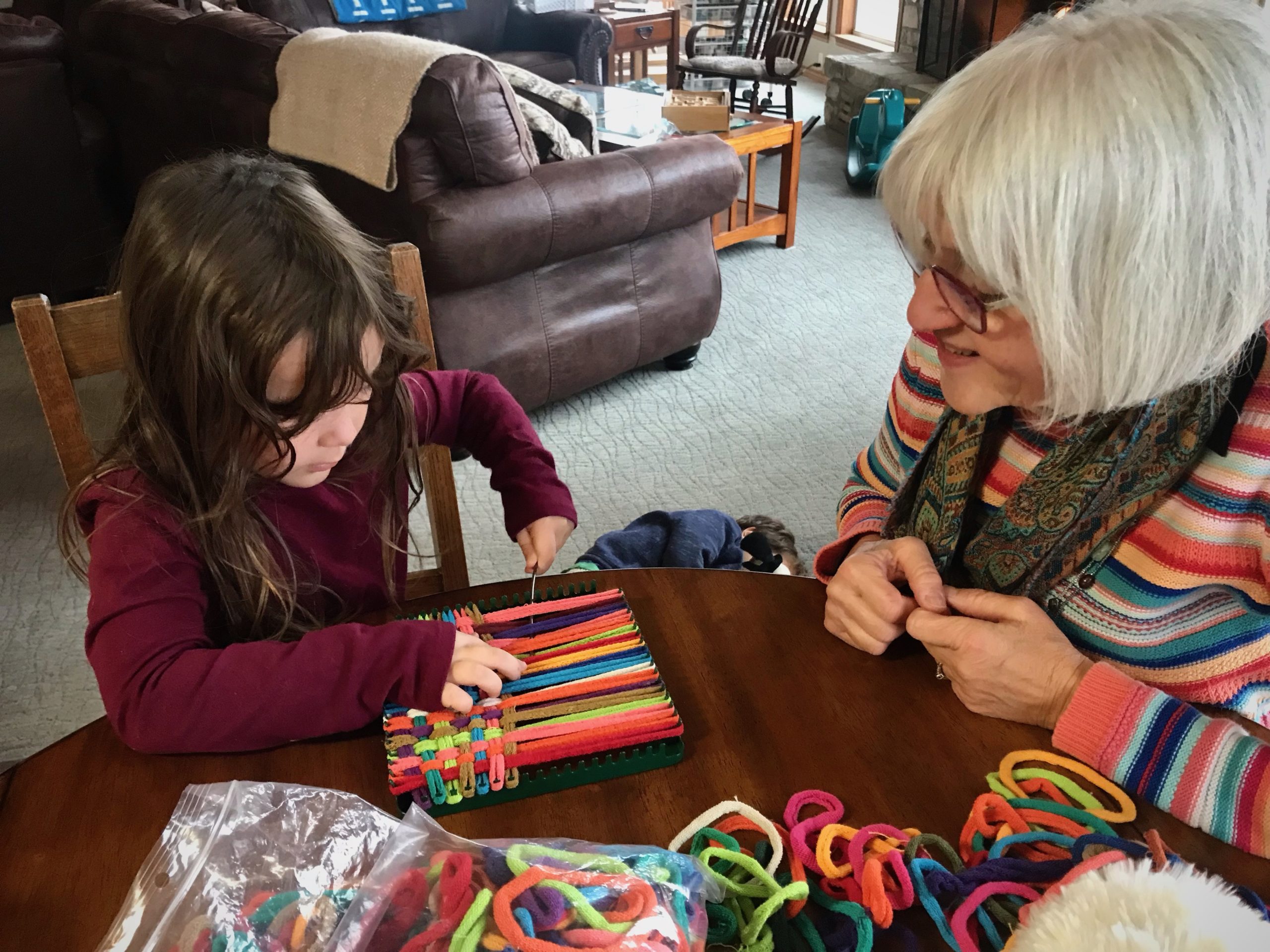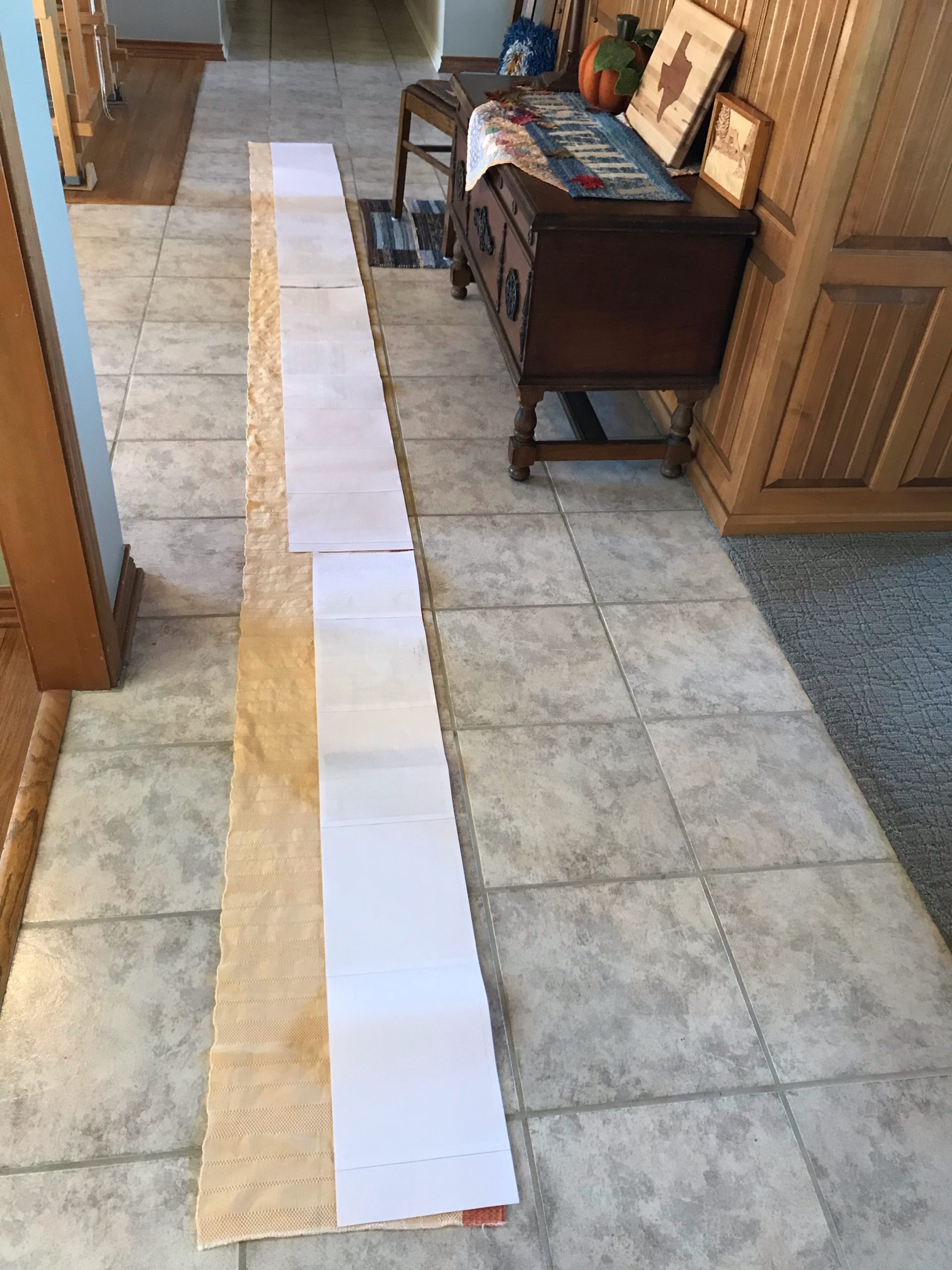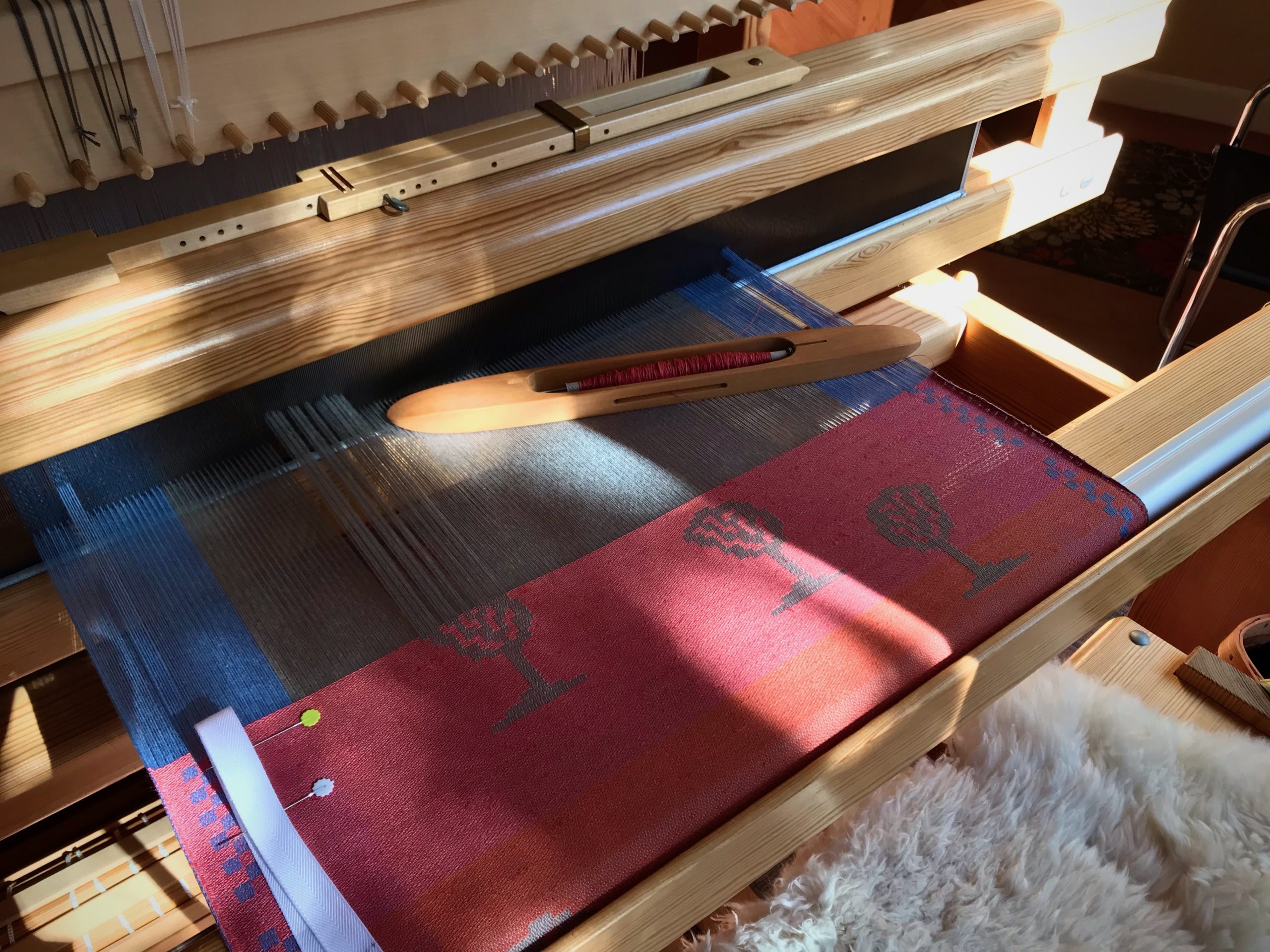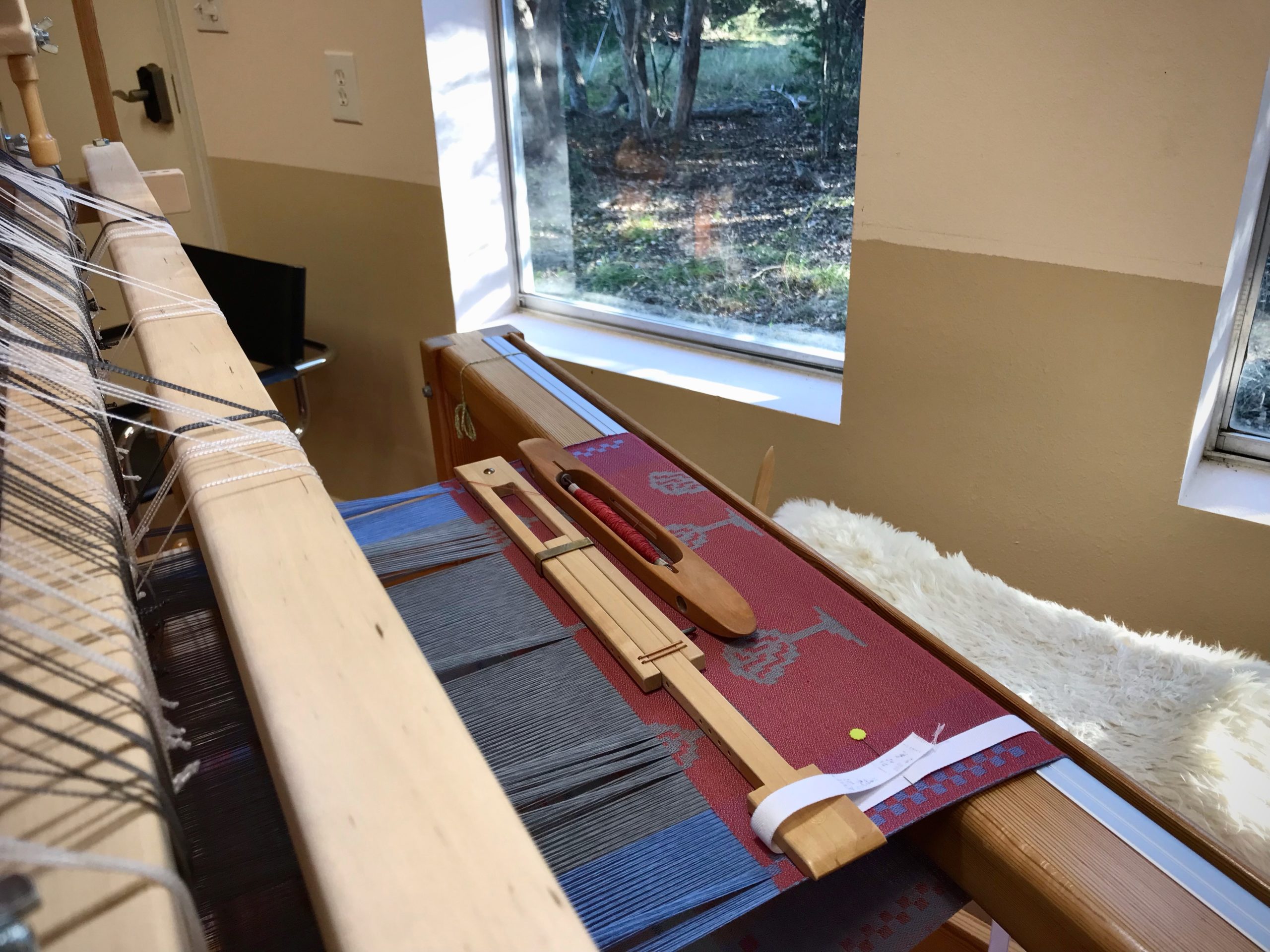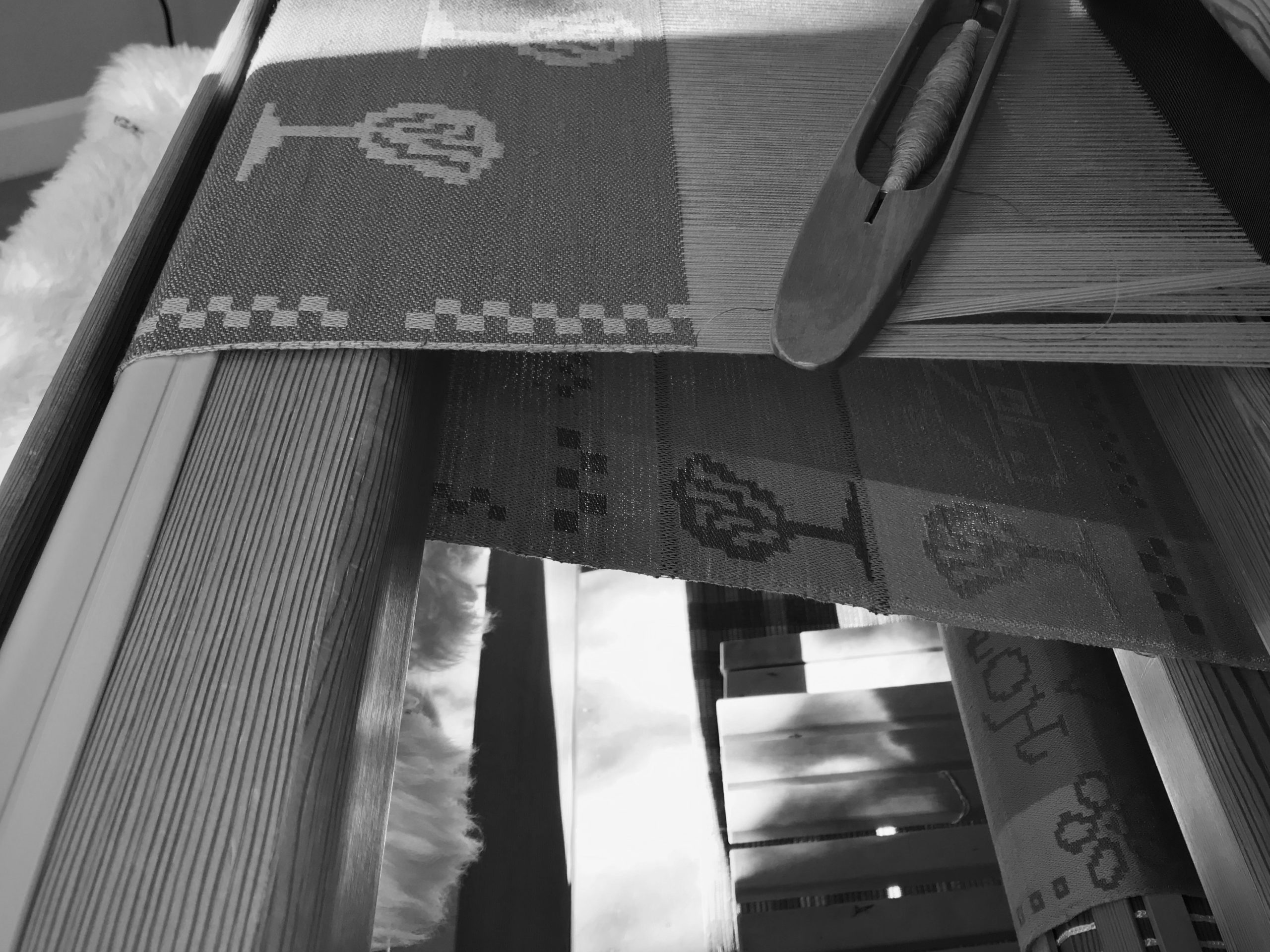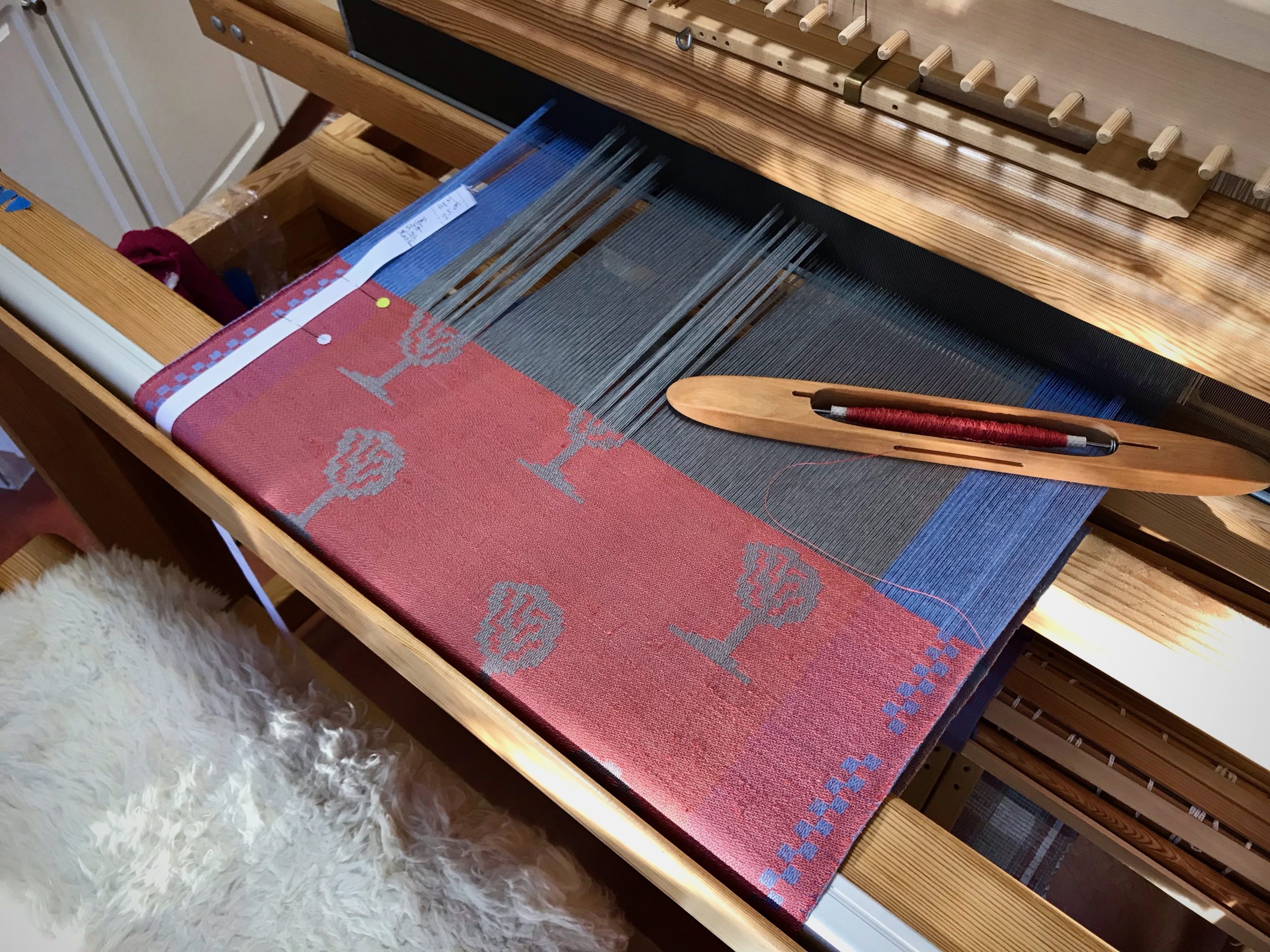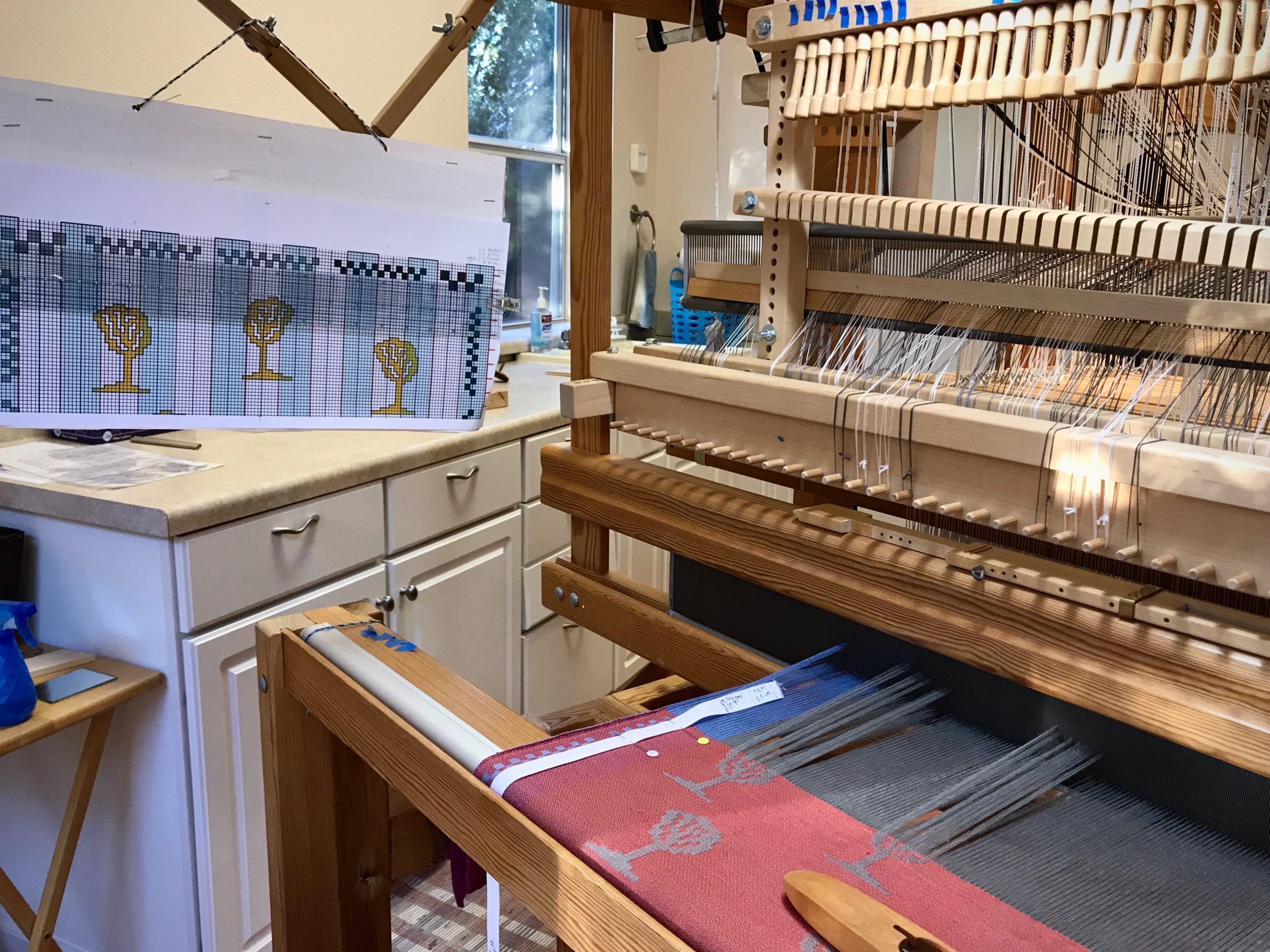For this second butterfly sample I am zooming way in, to expose more detail of the delicate stained-glass wing. Transforming the photograph into a weaveable cartoon is a fascinating task in itself. In real life, when do we ever get this close a look at the intricacy of the fluttering wing?
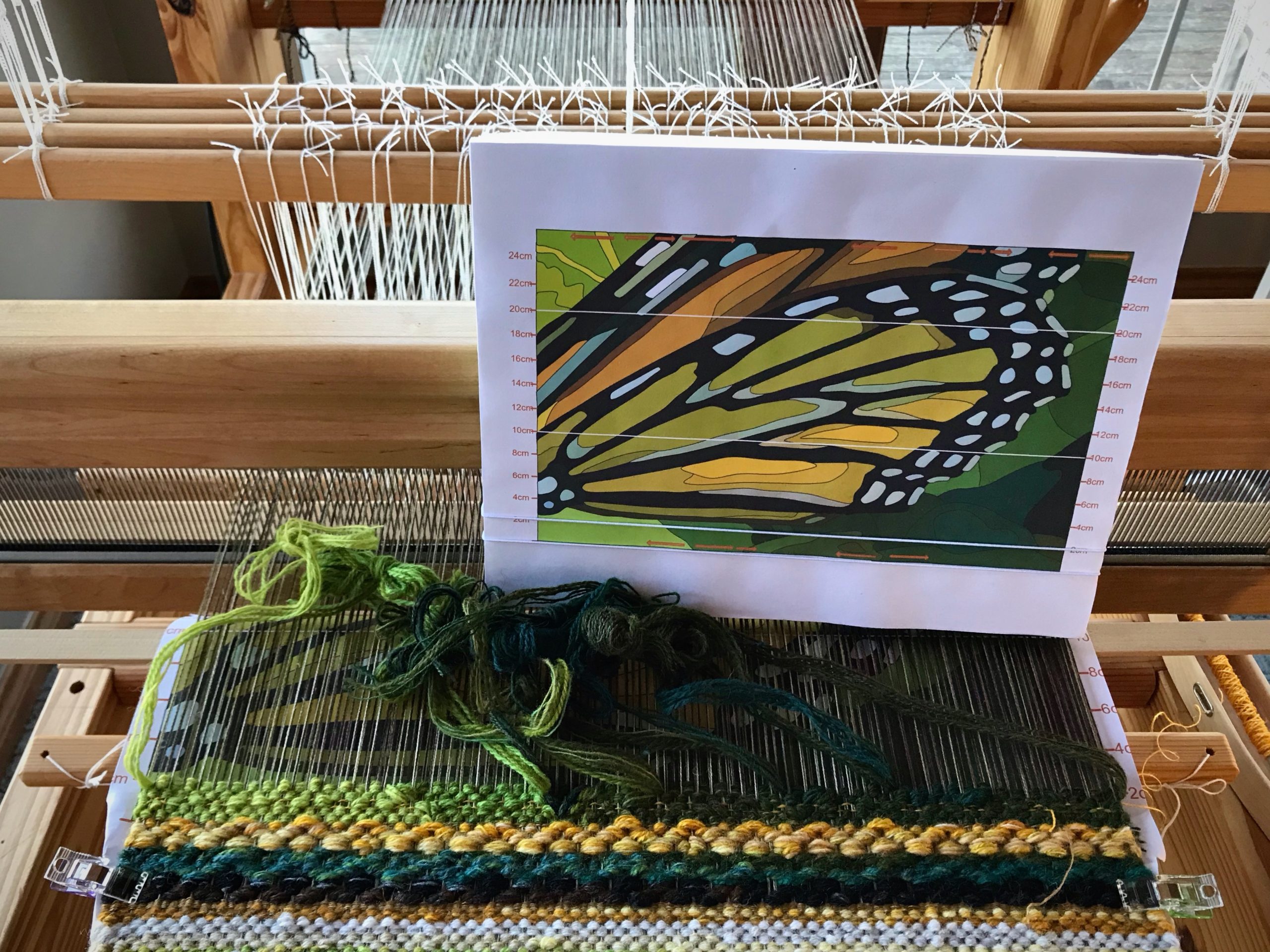
The primary reason for these butterfly samples is for me to gain a better understanding of how the details of the cartoon image relate to the sett of the warp on the loom. My goal is to thoroughly explore this style of tapestry. So, I aim to become adept in creating well-suited cartoons.
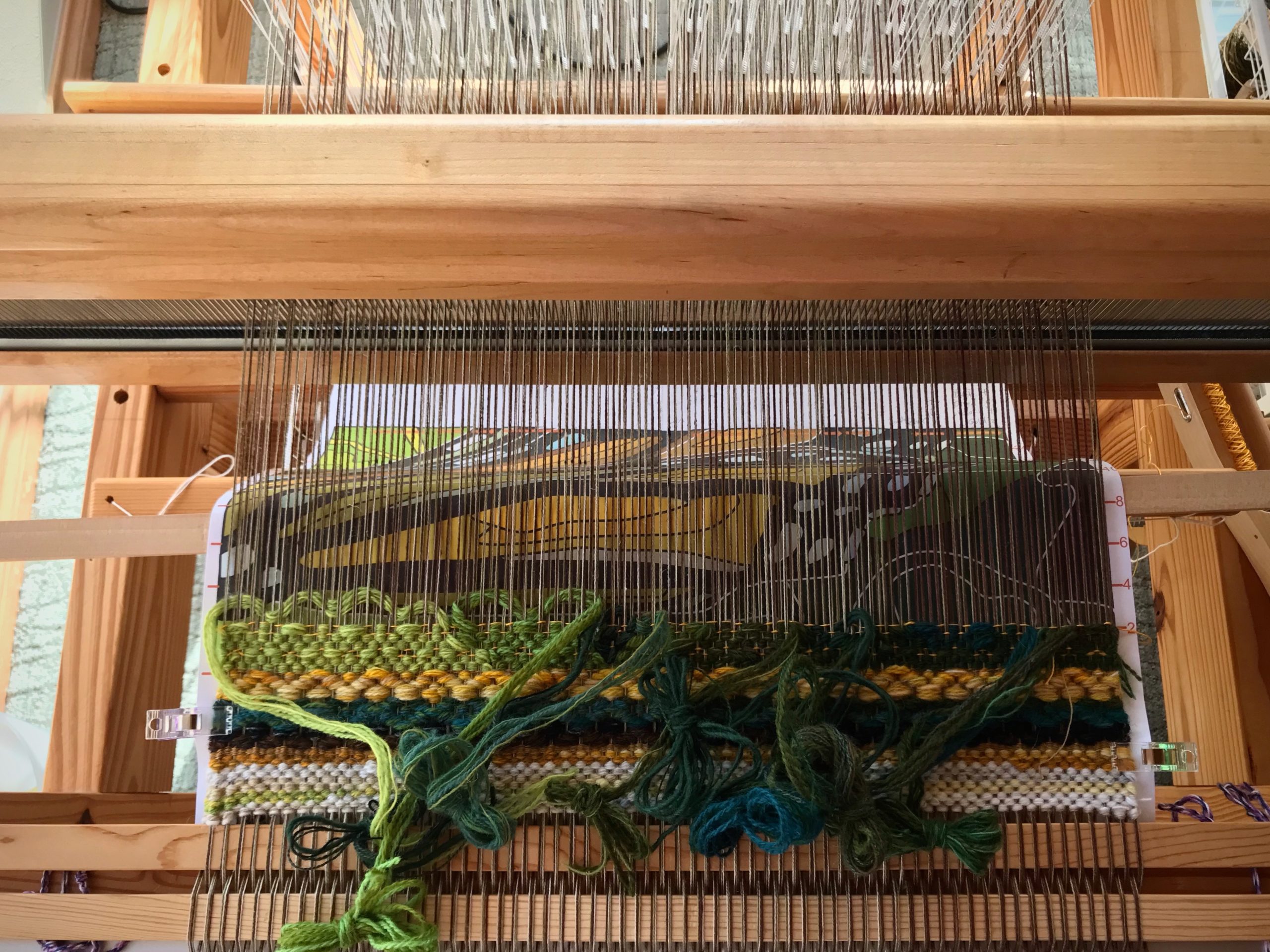
Let’s zoom in to the familiar scene of baby Jesus generations ago. The child born in a Bethlehem stable drew the attention of lowly shepherds, not impressive celebrities. Announced by angels, not by stately heralds. The detail clearly depicts something out of the ordinary: There is a kingdom that is not of this world. A King who shows up, not cloaked in royalty, but wrapped in the cloth on hand. What an intricate plan it is that a babe named Jesus would become our Savior King! And, that he transforms the image of those whose hearts invite him in.
May you examine the Christmas story in detail.
Looking forward to Christmas,
Karen

